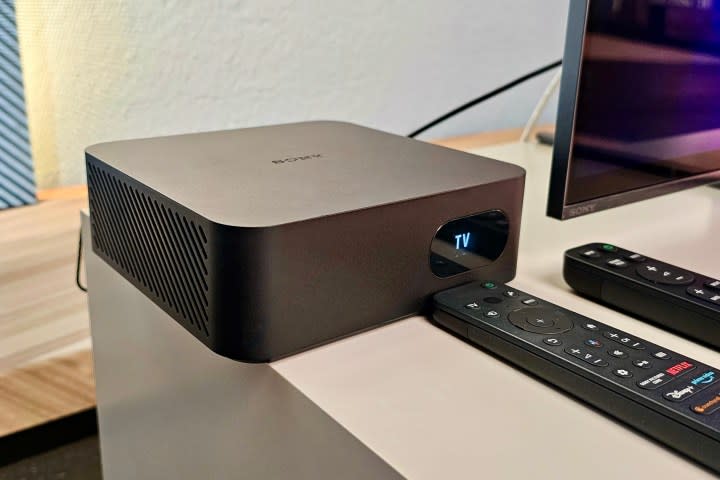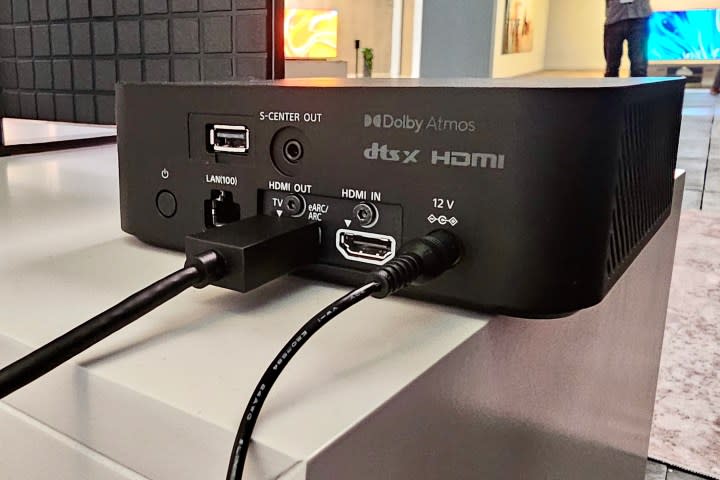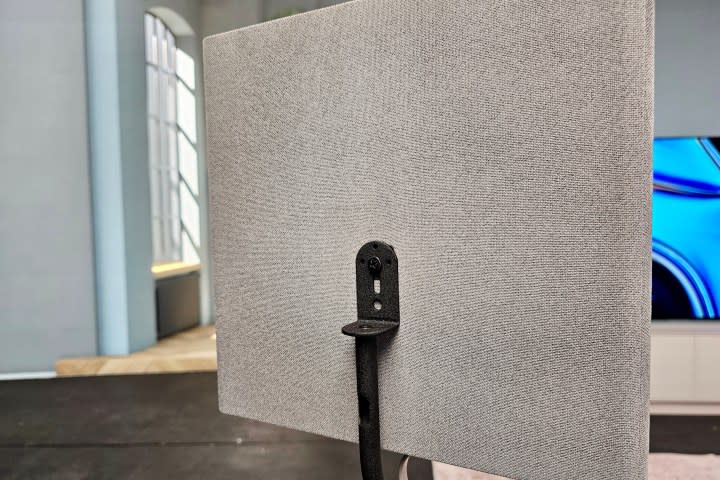Sony’s best soundbars are reborn as the Bravia Theater Bar 8, Bar 9, and Quad
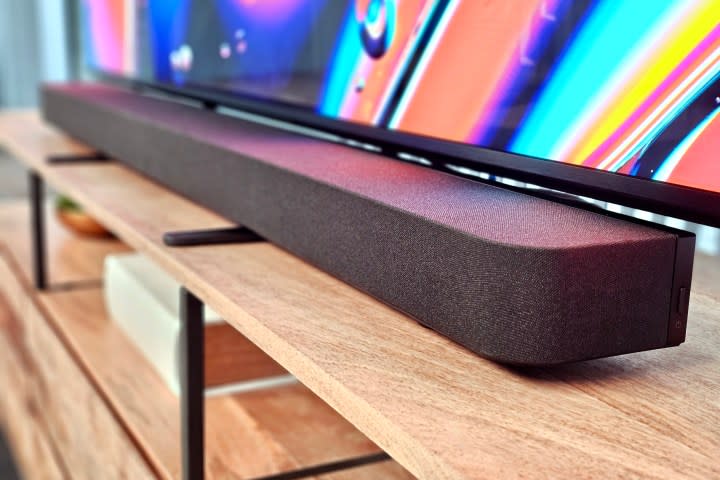
Sony is clearly on a mission to simplify its product brands and names. Today, the company has announced the merger of its flagship TVs and soundbars under the Sony Bravia brand. New 2024 Bravia TVs include the Bravia 9, Bravia 8, Bravia 7, and Bravia 3. Its new 2024 soundbars will now live under the Sony Bravia Theater name. These include the Bravia Theater Bar 9, Theater Bar 8, Theater Quad, plus a neckband speaker called the Theater U.
This is a continuation of a trend that started earlier in April with the company’s new ULT Power Sound brand, a family of headphones, portable speakers, and party speakers united by their emphasis on big bass sound.
Along with the new Sony Bravia Theater name comes new designs, new features, and new (and more expensive) pricing. All four products will be available for preorder this spring, but Sony hasn’t indicated when it will ship the new products to buyers.
While almost all of the updates to Sony’s soundbars are welcome improvements, we’ve noted one big step back for fans of hi-res audio: the Bar 9, Bar 8, and Quad no longer support Chromecast audio, a feature that was included on their predecessors. For iPhone and Android users alike, Chromecast offered up to 24-bit/96kHz lossless streaming, a big loss consider all three products are hi-res audio capable.
Apple AirPlay 2 is still supported, as is Spotify Connect, but neither of these Wi-Fi based options are true substitutes. AirPlay is CD-quality only, (and only available to Apple devices), and since Spotify has yet to announce even a lossless tier, Spotify Connect is only a little better than Bluetooth in terms of quality.
Digital Trends had the opportunity to see and hear the new products at an invite-only event in Culver City, California, at Sony Pictures Studios. Here’s a sneak peek at the 2024 Sony Bravia Theater lineup.
Sony Bravia Theater Quad, $2,500
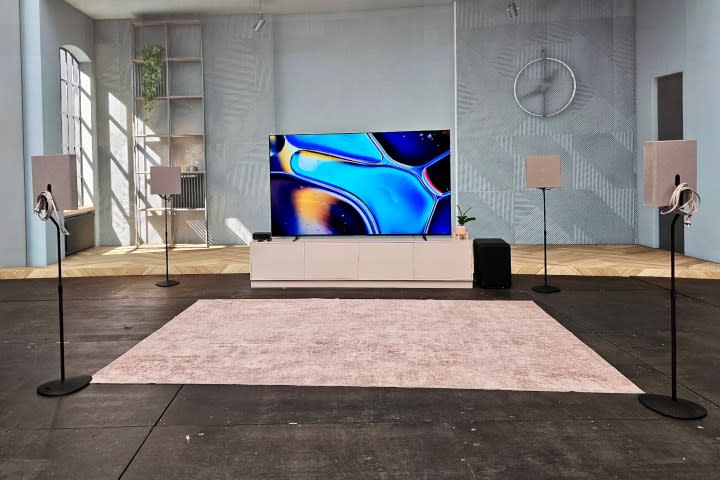
One of the most interesting soundbar concepts from the past few years barely resembles a soundbar at all. I’m talking about the Sony HT-A9, a set of four cylindrical wireless speakers that connect to your TV via a small breakout box that acts as a miniature AV receiver.
Sony has officially sunset the HT-A9 model, but the concept lives on in the new Sony Bravia Theater Quad. It’s a reimagined version of the HT-A9 that replaces the four rigid plastic cylinders with thin, flat, fabric-grille squares. The new speakers have a much softer and lower profile shape, which should be much easier to wall-mount than their predecessors. The new design is a welcome change; the new $2,500 price, however, is a shock: Sony announced the HT-A9 in 2021 at $1,800 and it’s currently discounted to $1,500.
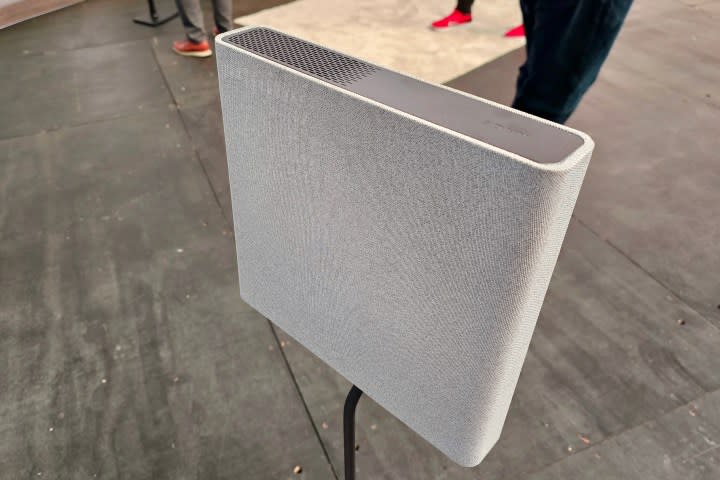
Each Quad speaker contains four drivers — a tweeter, a midrange, a woofer, and an up-firing height effects unit — for a total of 16 drivers. That’s a step up from the HT-A9’s triple-driver design. As with the HT-A9, the system is calibrated with Sony’s Sound Field Optimization technology, which automatically measures and compensates for a variety of acoustic factors like speaker position, listening position, and room conditions.
In combination with Sony’s 360 Spatial Sound Mapping algorithms, the company says the Quad creates 16 phantom audio channels arranged around your listening space. Like the HT-A9, the Quad works with Sony’s Acoustic Center Sync feature (which uses a TV’s speakers as a center channel) on compatible Sony TVs, though Sony says it’s been improved on the Quad. You can also augment the Quad’s bass with either of Sony’s existing wireless subwoofers, which are unchanged from 2023 (SA-SW5 or SA-SW3).
In addition to Sony’s already excellent support for hi-res and spatial audio formats like Dolby Atmos, Sony 360 Reality Audio, and DTS:X, Sony says that IMAX Enhanced compatibility will be available with a future firmware update — provided you also have one of those Sony subwoofers.
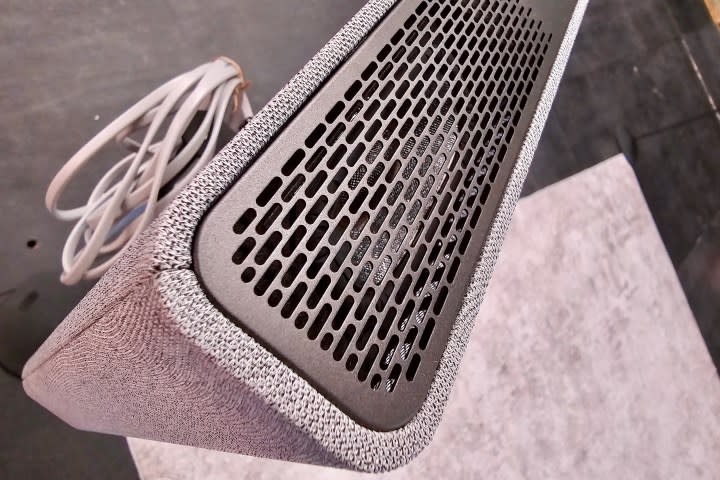
Our Sony Bravia Theater Quad demo included a scene from Denis Villeneuve’s Dune. It was a great reminder of how effective Sony’s 360 Spatial Sound Mapping can be. Unfortunately, the HT-A9 wasn’t on-hand for comparisons, so it’s hard to say just how much of an improvement Sony has managed to achieve from one generation to the next.
The Bravia Theater Bar 8, 9, and Quad all have a single HDMI input and an HDMI ARC/eARC output, with passthrough support for 4K HDR, 8K HDR, Dolby Vision, and HDMI 2.1 gaming features such as 4K120, VRR, and ALLM. However, I’m a bit disappointed that Sony didn’t take the opportunity to add a second or even a third HDMI input to the Quad’s breakout box. For anyone who chooses to wall-mount their TV (thereby making the TV’s HDMI ports more difficult to access), more inputs on the Quad would have been really useful.
Sony Bravia Theater Bar 9, $1,400
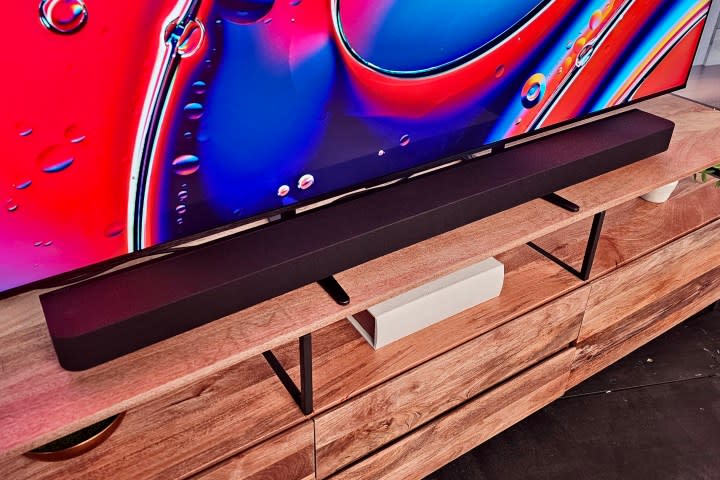
Sony’s HT-A7000 is a superb single-speaker home theater system, and Sony says it has managed to improve on that performance while simultaneously slimming down the soundbar’s proportions by 36%, resulting in the new Bravia Theater Bar 9. Gone is the brawny mixture of glass, plastic, and metal, replaced instead by a slim, fabric-wrapped bar with elegant curves at either end. One look at the photos and you can see how radically the Bar 9 differs from the A7000.
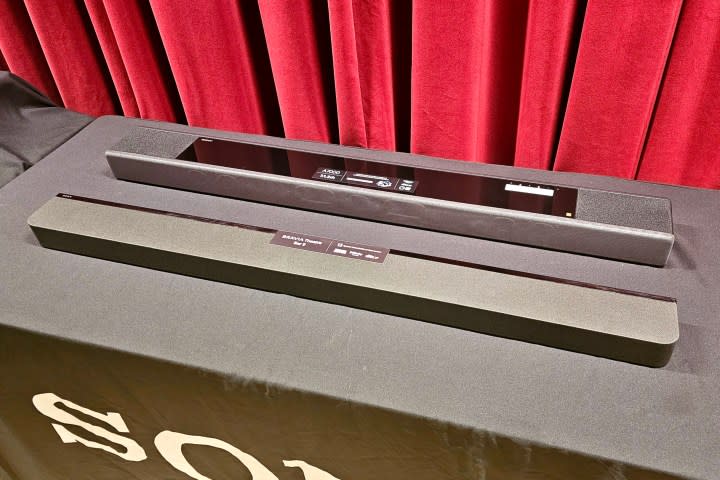
Under that minimalist guise sits 13 discrete drivers (versus the A7000’s 11 drivers) — most of which are new to the Bar 9 — including three tweeters, four woofers, two side-firing units, two up-firing drivers, and two beam tweeters. On top of that are four passive radiators to help with low-end bass response. It’s a very different layout than the A7000, which included a single built-in subwoofer.
To maximize dialogue clarity, Sony borrowed the Bar 9’s central tweeter from it $8,000 SA-Z1 hi-res near-field speakers.
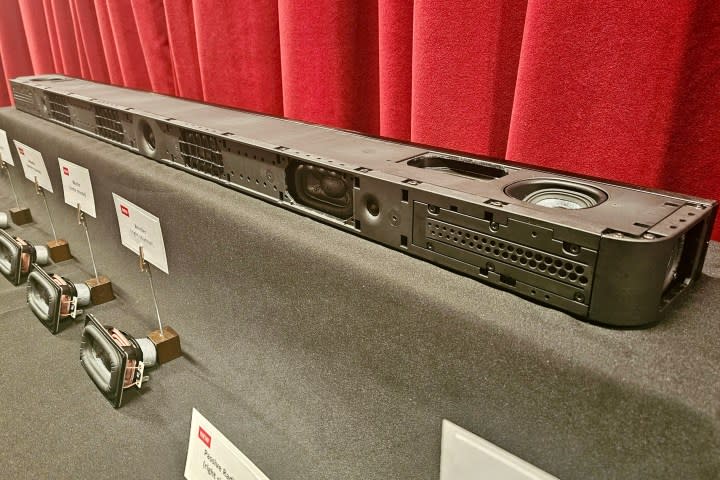
Sound Field Optimization technology takes care of calibration, and the Bar 9 also offers 360 Spatial Sound Mapping. However, new for 2024 is the ability for the Bar 9 to perform 360 Spatial Sound Mapping without requiring Sony’s optional wireless surround speakers (the unchanged-for-2024 SA-RS5 and SA-RS3S).
As with the Bravia Theater Quad, Sony says that IMAX Enhanced compatibility will be available with a future firmware update — but with the Bravia 9, you’ll need wireless surrounds and a subwoofer.
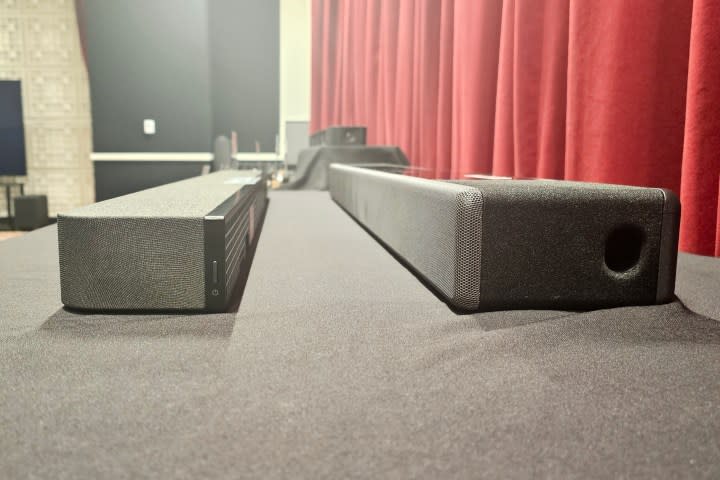
From the get-go, the Bar 9 will be compatible with major HDMI 2.1 features like variable refresh rate (VRR), something that the A7000 didn’t get until two years after it launched. However, Sony has decided to pare back the ports on the Bar 9 — it only offers a single HDMI input in addition to the standard HDMI output.
Sony’s demo of the Bravia Theater Bar 9 featured a clip from Venom. Unfortunately, the soundbar was configured with a subwoofer and surround speakers, so I couldn’t get a sense of how the Bar 9 performed on its own. That said, it absolutely lived up to my expectations for an immersive sound experience.
Sony Bravia Theater Bar 8, $1,000
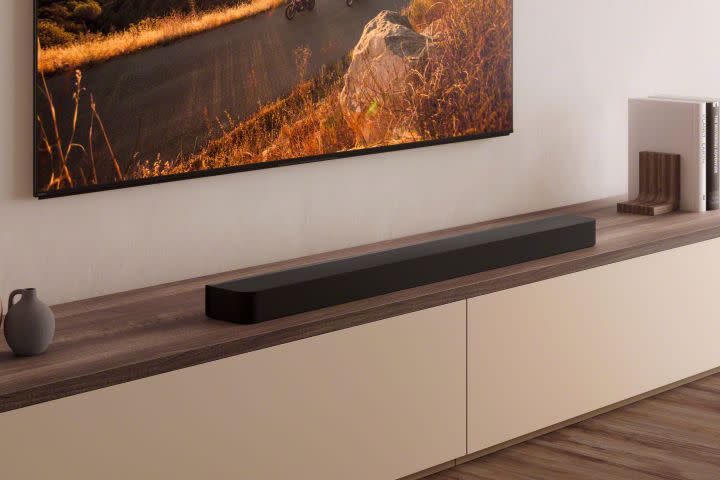
Sony’s midrange soundbar, the HT-A5000 is also getting a facelift (and a name change) to the new Bravia Theater Bar 8. It gets the same minimalist cosmetics as its larger sibling, the Bar 9, but with a different internal layout of drivers and a smaller, space-saving set of measurements.
Sony says the Bar 8 has 11 drivers: three tweeters, four woofers, two up-firing units, and two side-firing units. That’s one more than the A5000, but as with the move from the A7000 to the Bar 9, Sony has eliminated the single built-in subwoofer in favor of the four built-in woofers.
Despite these slightly lower specs, the Bar 8 has almost every feature you’ll find on the Bar 9, including support for Dolby Atmos, DTS:X, Sony 360 Reality Audio, and the firmware-updatable IMAX Enhanced when you use surrounds a sub.
But, like the Bar 9, you won’t need either of those accessories to enjoy Sony’s 360 Spatial Sound Mapping.
Our Bravia Theater Bar 8 demo included an example of Sony’s new Voice Zoom 3 AI dialogue enhancement. It’s built into Sony’s new 2024 Bravia 7, 8, and 9 TVs, but to hear it fully, you’ll need one of the new Bravia Theater sound systems like the Quad, the Bar 9, or the Bar 8. When Voice Zoom was engaged, I heard an instant improvement in speech clarity as background sounds were reduced.
Entry-level models
For 2024, Sony is keeping some of its earlier entry-level models around. The expandable, Wi-Fi enabled HT-A3000 remains, as does the HT-S2000 and the HT-S400.
Sony Bravia Theater U, $300
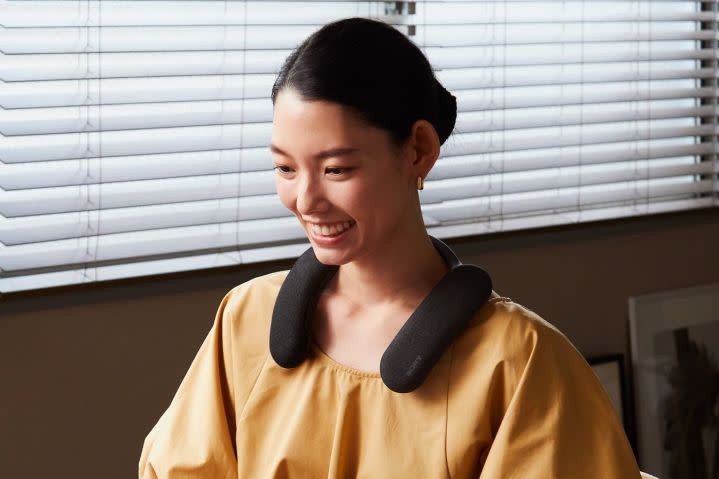
Finally, Sony also introduce a new version of its neckband personal speaker system. The Bravia Theater U is the next-gen version of the SRS-NS7 Wireless Neckband Speaker, a Dolby Atmos-compatible personal sound system that uses Sony’s 360 Spatial Sound Personalizer tech to create convincing, 3D-like sound effects.
You’ll be able to use the Theater U without any extra accessories when paired with Sony’s A95L, Bravia 7, 8, or 9 TVs, but an optional wireless transmitter will still be needed for older Sony models (or non-Sony TVs).
The U is a bit of niche device to say the least. It’s personal, like a set of headphones, but it doesn’t fully contain the sound the way headphones do. That means you can stay aware of your surroundings while still hearing all of the action.
In my demo, I was really impressed by the surround effects — sounds seem to float, ghost-like all around your head. But depending on the content you’re listening to, you can expect some of those sounds to be heard by others. The journalist sitting next to me was engaged in a first-person shooter on the PlayStation 5, and I was quite aware of the sound of machine-gun fire coming from his Bravia Theater U. Speaking of the PlayStation 5, you can sync the Theater U to a PS5 controller.
The Theater U supports stereo and of course Sony’s 360 Reality Audio format, but if you want to hear Dolby Atmos content, it needs to be connected to a compatible Sony Bravia TV.
